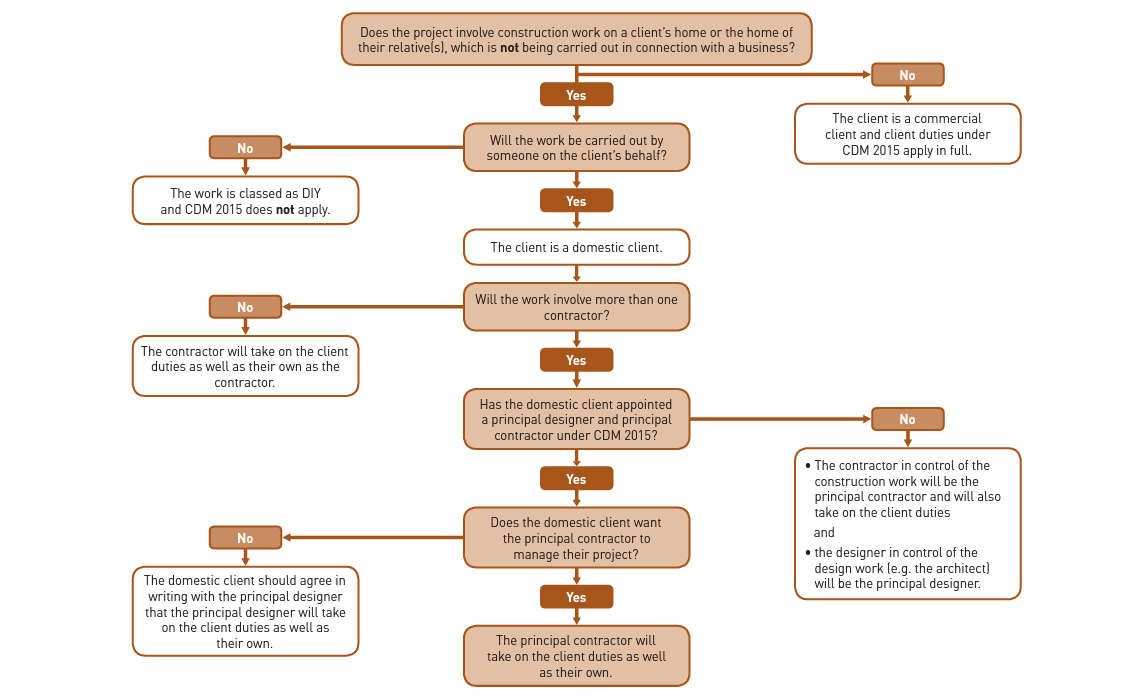Do your projects fall within the parameters of the CDM Regulations and are you aware of your responsibilities?
The CDM Regulations make construction safer by creating roles and responsibilities, making everyone accountable for the safety of everyone else during, and after, a project. Regulation 6 sets out the responsibility of the client to notify the HSE of certain construction projects. These are called Notifiable Projects.
What makes a project notifiable?
A construction project is notifiable if:It’s scheduled to last longer than 30 working days AND has more than 20 workers working simultaneously; OR The project exceeds 500 person days.The Client must inform the HSE using an F10 Form as soon as possible before the Construction Phase of the project begins. For Domestic Clients, the responsibility automatically falls to the Principal Contractor, but Commercial Clients can also delegate the responsibility to another duty holder – as long as the Client ensures it is completed in time. The F10 Form will ask for basic information, including:
- The address of the construction site and a description of the location;
- A brief description of the work being carried out;
- Names and contact details of duty holders;
- A start date for the construction phase; and
- A declaration signed by, or on behalf of, the Client confirming that they are aware of their duties under the regulation.
There are two kinds of notifiable projects which are not reported to the HSE which are railway construction projects and projects planned on nuclear sites. Railway construction projects must be reported to the Office of Rail and Road (ORR) and projects planned on nuclear sites must be reported to the Office for Nuclear Regulation (ONR). The same F10 form is used no matter which authority is being notified and it always remains the Client’s responsibility to ensure it’s completed in time.
Who are the duty holders of a notifiable project and what are their main duties?
| CDM duty holders* – who are they? | Summary of role/main duties |
|---|---|
| Clients Organisations or individuals for whom a construction project is carried out. | Make suitable arrangements for managing a project. This includes making sure that: • other duty holders are appointed • sufficient time and resources are allocated. Clients must also make sure that: • relevant information is prepared and provided to other duty holders • the principal designer and principal contractor carry out their duties • welfare facilities are provided |
| Domestic clients People who have construction work carried out on their own home, or the home of a family member, that is not done in furtherance of a business, whether for profit or not. | Domestic clients are in scope of CDM 2015 but their duties as a client are normally transferred to: • the contractor, on a single contractor project or • the principal contractor, on a project involving more than one contractor. However, the domestic client can choose to have a written agreement for the principal designer to carry out the client duties. |
| Principal designers Designers appointed by the client in projects involving more than one contractor. They can be an organisation or an individual with sufficient knowledge, experience and ability to carry out the role. | Plan, manage, monitor and coordinate health and safety in the pre-construction phase of a project. This includes: • identifying, eliminating or controlling foreseeable risks • ensuring designers carry out their duties. Prepare and provide relevant information to other duty holders. Provide relevant information to the principal contractor to help them plan, manage, monitor and coordinate health and safety in the construction phase. |
| Principal contractors Contractors appointed by the client to co-ordinate the construction phase of a project where it involves more than one contractor. | Plan, manage, monitor and coordinate health and safety in the construction phase of a project. This includes: • liaising with the client and principal designer • preparing the construction phase plan • organising co-operation between contractors and coordinating their work. Ensure that: • suitable site inductions are provided • reasonable steps are taken to prevent unauthorised access • workers are consulted and engaged in securing their health and safety • welfare facilities are provided. |
| Contractors Those who do the actual construction work. They can be either an individual or a company. | Plan, manage and monitor construction work under their control so that it is carried out without risks to health and safety. For projects involving more than one contractor, coordinate their activities with others in the project team – in particular, comply with directions given to them by the principal designer or principal contractor. For single-contractor projects, prepare a construction phase plan. |
| Workers The people who work for or under the control of contractors on a construction site. | They must: • be consulted about matters which affect their health, safety and welfare • take care of their own health and safety and that of others who may be affected by their actions • report anything, they see which is likely to endanger either their own or others’ health and safety • co-operate with their employer, fellow workers, contractors and other duty holders. |
**Organisations or individuals can carry out the role of more than one duty holder, provided they have the skills, knowledge, experience and the organisational capability necessary to carry out those roles in a way that allows for effective health and safety management**
How can a Domestic Client differentiate between when CDM Applies to them? Here is a guide on what to look at

At Browns Safety Services we have specialist consultants that can assist with ensuring you’re compliant with the management of Health and Safety on your project under the jurisdiction of The Construction (Design and Management) Regulations 2015. Feel free to get in touch if you would like to understand more about our services.